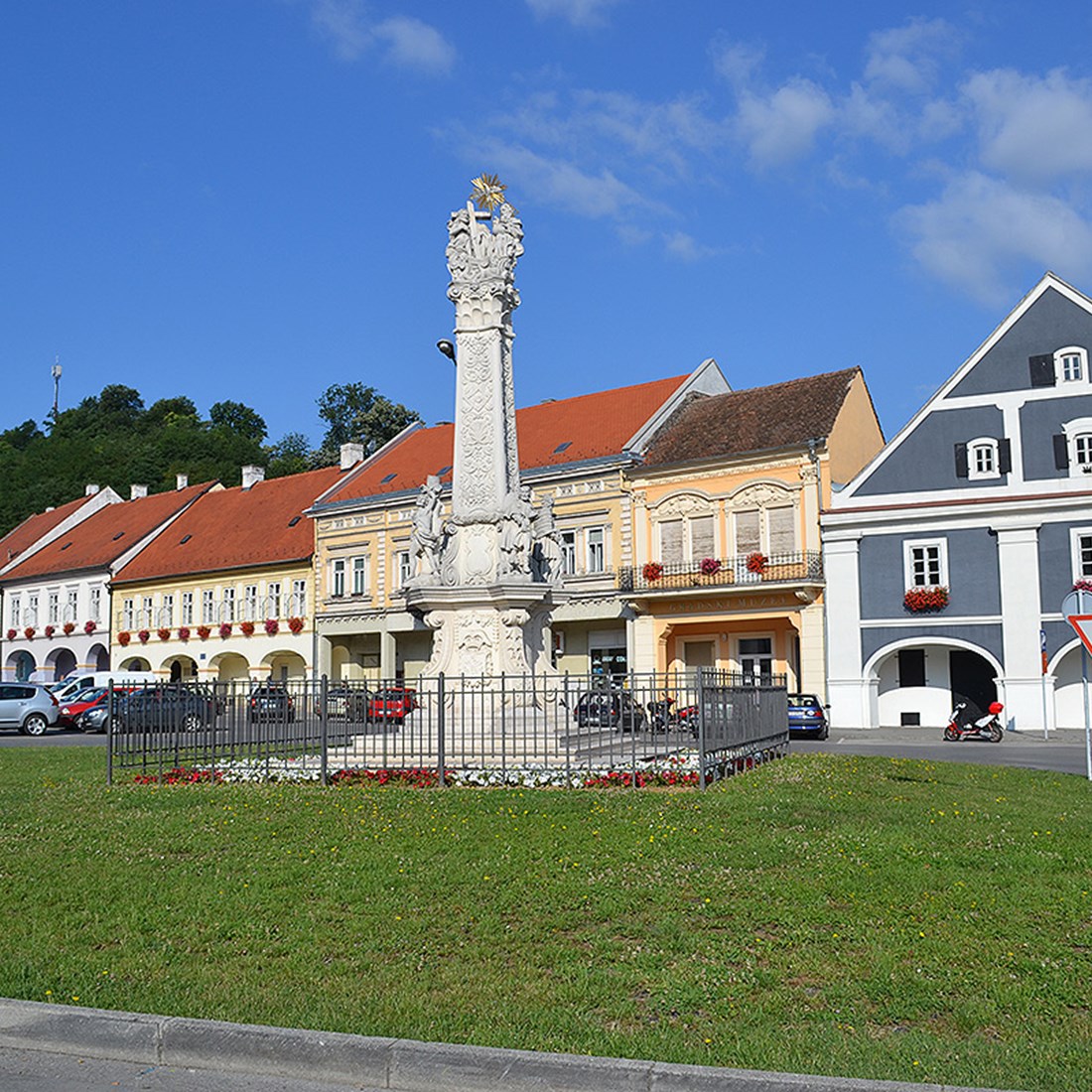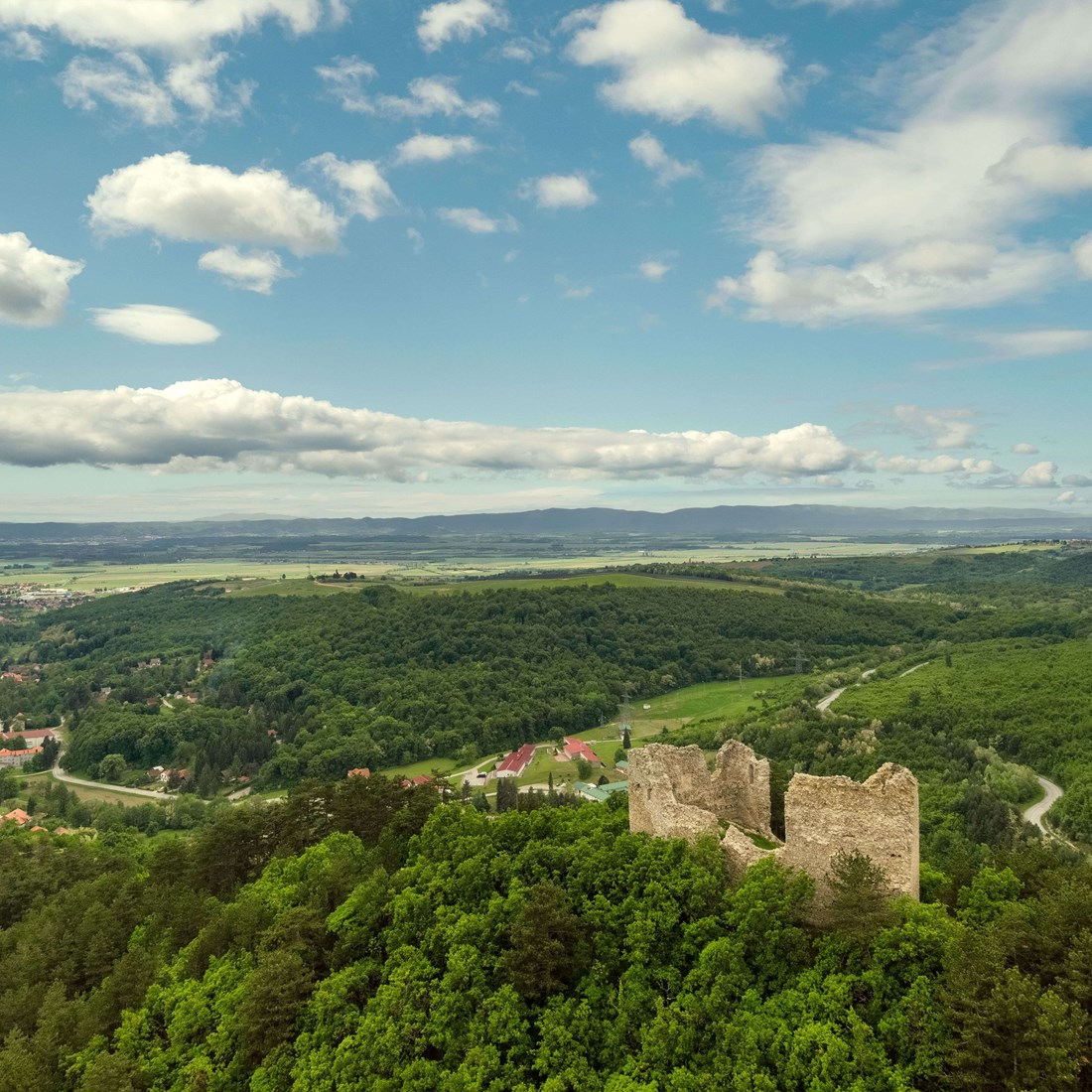Historical heritage


Kutjevo castle is a protected monument of architectural heritage and it belongs to the most beautiful monuments of the rich cultural heritage of this part of Slavonia and Croatia.

During the Middle Ages, a system of surveillance and defense was built in the form of military castles on the southern slopes of Papuk. One of them was Velički old town. This fort is north of St. Augustin’s church on the southern edge of Lapjak hill, 452 m above sea level. Visiting its remains is a true little adventure, but the effort you put in while climbing to it becomes irrelevant once you see the view of the Golden Valley spreading at its foot.

The center of the Kaptol settlement, only 12 km away from Požega, is dominated by a late-gothic-renaissance fort, around which the contours of a defense channel that used to be filled with water from the nearby Bistra stream can still be seen. The castle has an irregular hexagonal shape consisting of round towers and half-towers.

The old town of Pakrac, i.e., its present remains are in the very heart of the city where the buildings of the post, police and city administration are.

On the northern slopes of Mount Požega not far from Brestovci, there are some remains of a medieval tower that still has a wooden door frame. It was a fort built as a defense system on the northern stretch of the above-mentioned mountain range during the 14th century at the time of the Ottoman incursions and its goal was to protect the entry to Požega Valley.

The cellar of the Spahi, or the Spanish cellar, is one of the most impressive facilities in Pakrac and its surroundings. It consists of two wings, i.e., it was built in the shape of a key. The frontage of the first wing is facing Strossmayer street, while its second wing is cut into a hill and is located under the building of the Croatian home (Hrvatski dom).

On the eastern slopes of Psunj mount, not far from Čečevec and Šnjegavić, there are archeological remains of a Benedictine abbey of Saint Michael on Rudina, Monte Cassino of Požega. This is a very picturesque, easily accessible area where the shepherds still herd their flocks.

On the southern slopes of Papuk, above the Kaptol settlement, there is an archeological location with the same name. During the Early Iron Age (800 – 400 B.C.), the community that lived in this area buried their distinguished dead under big mounds of earth–tumuli. A fortified settlement was located in the area of Kaptol-Gradac with two cemeteries: Kaptol-Gradac necropolis and Kaptol-Čemernica necropolis.

On the road between Pleternica and Požega, there is a village Kuzmica. Next to the baroque church that dominates this village is an old building that we call Kušević Manor. It belonged to the former Blacko manorial estate, whose owners were the Ohmučević-Grgurić family, originally from Dubrovnik. After that, it was bought by a notary of Požega County, Ljudevit von Hranilović in 1767. This manorial estate stayed in his family until the middle of the 19th century when it was bought by Svetozar von Kušević, and in 1945 it was assumed by the state.

Čaklovačka gradina is located on a steep hill on the northern slopes of Psunj, and south of the Pakrac-Požega road, close to Dragović village. This town had an important strategic position in the Middle Ages because the path from Kamengrad and Požega in the direction of Pakrac was passing right next to it. The fort was built in the 13th century on the property of St. John of Jerusalem (Sv. Ivan Jeruzalemski). It was mentioned in the 15th century under the name Csaktornya, and in later documents as Čakovec, only to become known as Čaklovac in the end.

South of Viškovci village, among the forests of Mount Požega, there is a fort called Viškovački grad. Forest pathways from the direction of Viškovci, Blacko, or Vesela villages lead to this impressive ruin.

